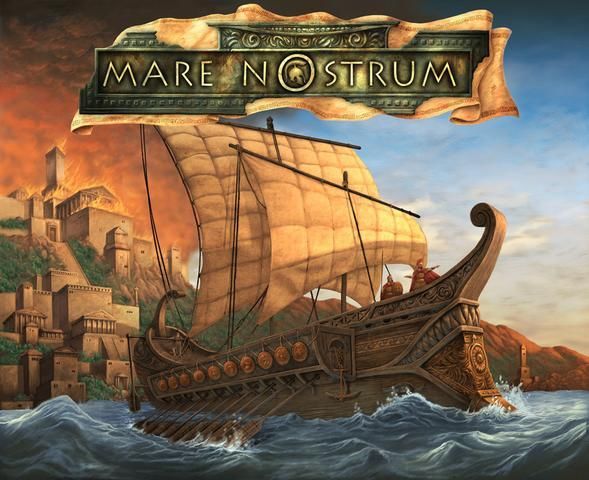Mare Nostrum (2003) Board Game
Mare Nostrum is a board game that was first released in in 2003. Designed by Serge Laget and published by Eurogames, it is set in ancient times and revolves around players building civilizations and competing for dominance in the Mediterranean region.
Game Components of Mare Nostrum
How To Setup Mare Nostrum
Setting up Mare Nostrum involves several steps. First, the game board is placed in the center of the playing area, and each player selects an empire (Rome, Greece, Babylon, Egypt, or Carthage) and takes the corresponding player board and tokens. Players then place their initial units and buildings on the board according to the rules. Each player receives a set of resource cards based on the resources controlled by their empire. The setup phase typically takes about 20 minutes.
Gameplay Mechanics and Game Objective
Mechanics
Objective
The game ends when one player achieves any of the following victory conditions:
Player Experience
Playing Mare Nostrum is an immersive experience that combines strategic thinking, trading, diplomacy, and military strategy. Players take on the roles of historical empires, each with unique characteristics and strengths. The game is divided into phases: Commerce, Political, and Military, each allowing players to manage resources, build structures, and engage in combat. The game requires a balance between resource collection, trading, and military expansion, making it challenging and engaging.
Pros
Cons
Personal Thoughts on Mare Nostrum
Mare Nostrum is a game suited for experienced board game enthusiasts who enjoy complex, strategic gameplay. It is ideal for those interested in historical themes and are willing to invest time in learning and mastering the game’s various mechanics. While it can be challenging, especially for new players, the game offers a rich and rewarding experience that combines many elements of other popular strategy games. If you’re looking for a game that challenges your strategic thinking and historical knowledge, Mare Nostrum is an excellent choice.
We are supported by our audience. When you purchase through links on our site, we may earn an affiliate commission, at no extra cost for you. Learn more.

